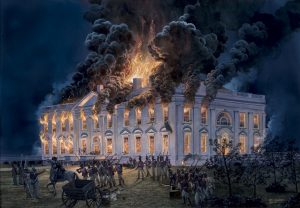2.
- Coyote Pedagogy is a term sometimes used to describe King’s writing strategies (Margery Fee and Jane Flick). Discuss your understanding of the role of Coyote in the novel.
Coyote is one of the more intriguing characters in this novel, and also in the spectrum of readings that we have had in this course. In Green Grass Running Water he is positioned as the creator, or at the least present when the world began. He plays a pivotal role in the novel, by this I mean he is always present, but often outside of the regular narrative. I read his appearance as an ‘outsider’ to be King’s commentary on the ignorance of the ‘new spiritual powers’ (western religions) to recognize the pedagogy of the first nations traditional teachings. Though King challenges this notion with the conversation between Coyote and Dog, and further illustrates when Dog, who refers to himself as god, who asserts that he wishes to be the more important figure. In paralleling Coyote and Dog, he positions Coyote as the First Nations equivalent of the creator to juxtapose the christian equivalent in god. You can draw further parallels in the chaos that Coyote has attributed to his actions, and the fact that water, symbolizing great floods, appears wherever Coyote appears. This appears to be an obvious reference to the biblical flooding that is attributed to the will of god.
Coyote is almost always referred to as a catalyst, and true to form, he is present at the climax of the novel when the dam finally breaks. It should also be mentioned that the other four characters of note, the old ‘Indians’ choose Western names to identify themselves. This notion is presented in a manner that shows the adaptability of the First Nations people in accepting and absorbing new and strange structures into their worlds. In contrast to this, Coyote does not assume any western name, he simply is Coyote. This sets him somewhat above the rest, if a hierarchy were to be constructed. Though it appears that his travelling companions at times are annoyed with Coyote, there constant references to his placement during key events in the history of the world actually state Coyote’s claim to be of an ancient race, and assert his importance in creation. This conforms with the duality that Coyote represents; on one hand he is a pivotal figure in creation stories, yet by his very nature he needs to be handled with care, for his actions often lead to unforeseen events.
Coyote represents the bridge between old and new traditions. He remains active and relevant in current events as they happen, but at the same time his involvement in the early history of the world is repetitively confirmed. Coyote is the character that enhances the relevance of the modern narrative in the novel, while still affirming the traditional First Nations belief structures and traditions.

 This particular image is borrowed from the aforementioned blog on Partisan , and is in reference to a Northrop Frye comment that is referenced in that article.
This particular image is borrowed from the aforementioned blog on Partisan , and is in reference to a Northrop Frye comment that is referenced in that article.